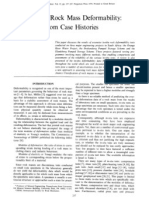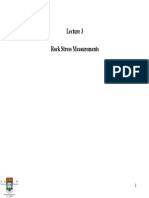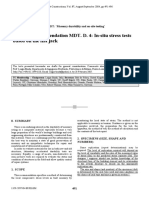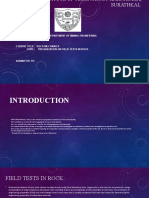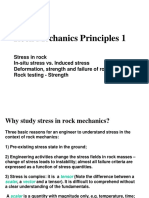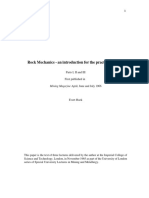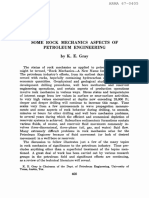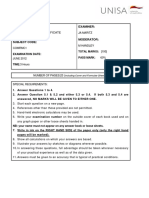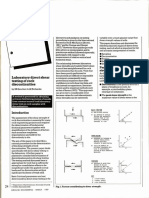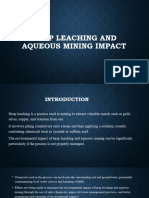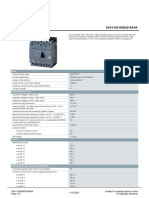0% found this document useful (0 votes)
53 views15 pagesStress-Strain Analysis in Rock Mass
This document summarizes the compensation method (flat jack tests) for measuring in situ rock stresses. The method involves cutting a slot in the rock, inserting a flat jack, and pressurizing it until deformation gauges return to their original position, indicating cancellation of the relief-induced stresses. The cancellation pressure provides an estimate of the stress normal to the jack surface. Key assumptions are that the rock mass is isotropic/homogeneous and the stress relief is fully reversible. Orienting tests in multiple directions accounts for potential anisotropy. The flat jack method provides important stress data for rock engineering design and interpretation of stress conditions around excavations.
Uploaded by
Temesgen SilabatCopyright
© © All Rights Reserved
We take content rights seriously. If you suspect this is your content, claim it here.
Available Formats
Download as PPTX, PDF, TXT or read online on Scribd
0% found this document useful (0 votes)
53 views15 pagesStress-Strain Analysis in Rock Mass
This document summarizes the compensation method (flat jack tests) for measuring in situ rock stresses. The method involves cutting a slot in the rock, inserting a flat jack, and pressurizing it until deformation gauges return to their original position, indicating cancellation of the relief-induced stresses. The cancellation pressure provides an estimate of the stress normal to the jack surface. Key assumptions are that the rock mass is isotropic/homogeneous and the stress relief is fully reversible. Orienting tests in multiple directions accounts for potential anisotropy. The flat jack method provides important stress data for rock engineering design and interpretation of stress conditions around excavations.
Uploaded by
Temesgen SilabatCopyright
© © All Rights Reserved
We take content rights seriously. If you suspect this is your content, claim it here.
Available Formats
Download as PPTX, PDF, TXT or read online on Scribd
/ 15








